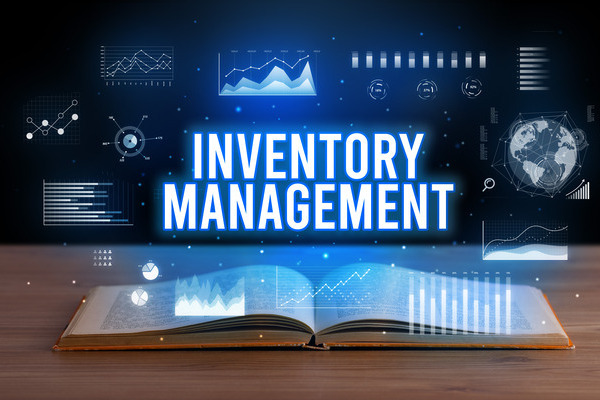When people hear the terms “surplus equipment” or “unused equipment,” they often think of large, obvious assets, such as trucks parked for weeks or months on end, cranes that are no longer in rotation, or outdated production lines that are gathering dust. But surplus equipment shows up in more subtle ways across different industries. In this guide, we’ll walk you through how to identify if you have an issue, why it’s essential to take action if you do, and tips for managing surplus equipment to help keep your company financially strong.
 What Surplus Equipment Really Looks Like
What Surplus Equipment Really Looks Like
Surplus equipment isn’t limited to idle or broken pieces. Sometimes it’s items that are underperforming, misallocated, or no longer aligned with your current operations. Knowing how to spot it in your organization is the first step toward rectifying the situation.
Vehicles without Regular Routes or Assignments
These can include trucks, cargo vans, trailers, or service vehicles that remain road-ready but spend more time parked than deployed.
Tools or Machinery That Rarely Leave Storage
These may still be functional, but if you cannot recall the last time they were used, they’re likely not contributing to your current operations.
Technology That is No Longer Actively Assigned
Devices like laptops, tablets, or phones often pile up after turnover or upgrades, especially when no one is specifically assigned the job of managing them.
Production Equipment Tied to Past Work
This includes items such as molds, specialized tooling, or machines that were built around processes you no longer use.
Marketing or Presentation Gear That Stays Packed Up
Displays, banners, lighting kits, and other portable setups often go untouched between events or after strategy pivots.
Extra Equipment from a Shift in Headcount or Space
When your team size or footprint changes, it’s common for leftover equipment to sit unused without being formally retired.
How Surplus Equipment Affects Your Financial Health
Keeping surplus equipment isn’t always the wrong move, but it does have financial tradeoffs. If you’re not tracking those, you might be carrying unnecessary costs or missing better uses of your capital.
Tied-Up Capital
Equipment often represents a significant upfront investment. If it’s not producing revenue, you are losing out on returns that could be used elsewhere.
Hidden Operating Costs
Costs to hold equipment don’t stop just because you’re not using it. You may be paying for things like storage, maintenance, insurance, compliance, or even IT support on an ongoing basis. This can drain your cash flow and make it harder to cover essential expenses. Considering that three out of five small businesses say they struggle with cash flow challenges, and three in ten say they’ve been unable to cover crucial expenses like payroll and vendor payments, per Intuit surveys, it’s a major concern.
Balance Sheet Bloat
Surplus equipment still appears on your balance sheet, even if it’s not helping your business earn money. That can make your return on assets look low, which is a red flag for lenders and investors who want to see that you’re using resources effectively.
Depreciation without Utility
Equipment continues to lose value when idle. If it depreciates to the point where resale is no longer viable, you lose the opportunity to recover some or all of the cost.
Lost Opportunity
Most importantly, every dollar tied up in underused equipment is a dollar not being invested in growth. More than half of all small businesses have lost $10,000 or more because cash flow prevented them from accepting a project or sale, Intuit surveys show.
Quick Guide to Managing Surplus Equipment
At this stage, you likely have an idea of which unused assets are holding your business back and how they’re impacting you financially. It’s time to take action.
Step 1: Take Inventory of What You Actually Have
The first step of surplus asset management is listing all equipment that is no longer in regular use. This includes machinery, vehicles, tools, and technology. The objective here is to create visibility and identify items that may no longer support current operations, so a simple spreadsheet is often sufficient. Many businesses turn this and later steps into a collaborative effort and build a spreadsheet in Google Sheets or similar, so that everyone is working with the same document in real time.
Step 2: Assess the Value of Your Assets
Once you have a complete list, assess each item for both market value and usefulness within the business. Consider factors such as condition, age, and how well it aligns with the current operations. Some assets may be worth keeping if they can be reassigned, serve as backups, or support new initiatives.
Step 3: Explore All Your Options
Determine the best way to offload items with no remaining internal use. A few popular methods are covered below.
- Repurposing Equipment: Equipment repurposing may be an option if you can use the item for a different internal function, training, spare parts, or overflow capacity.
- Equipment Resale Strategies: Selling unused assets allows you to recover some or all of the value by listing the item through equipment marketplaces, auction platforms, or industry brokers. You can also work with specialized equipment liquidation companies to move things quickly.
- Donating Items: Provide useful assets to nonprofits, schools, or vocational programs, and consult your accountant to document any potential tax benefit.
Recycling or Disposal: For outdated or unusable equipment, pursue responsible recycling or certified disposal services to manage waste appropriately.
Step 4: Address Working Capital and Cash Flow in the Interim
If you’re experiencing symptoms like cash flow issues or a lack of working capital while working through the process, identify ways to smooth things out. For instance, if you issue B2B invoices, invoice factoring can accelerate those payments. Rather than waiting for your client to pay, you sell your invoices to a factoring company at a slight discount and receive most of the value right away. This method provides upfront cash to cover expenses and doesn’t create debt.
Step 5: Document What Leaves Your Business
Accurate documentation paves the way for comprehensive financial reporting and regulatory compliance. Keep detailed records of each asset’s final status, including resale receipts, donation letters, internal transfer notes, or disposal confirmations.
The Rise of Surplus Buying: Who’s Buying and Why It Matters
Surplus buying isn’t just an opportunity for buyers—it’s also a strategic solution for organizations managing their own surplus. When businesses actively participate in the secondary equipment market, whether as sellers or buyers, they support a circular economy that reduces costs, minimizes waste, and extends the useful life of assets.
For sellers, surplus buyers are essential. Startups, nonprofits, and local businesses often seek cost-effective alternatives to brand-new equipment—purchasing used office furniture, packaging tools, commercial kitchen assets, and more. Their demand helps organizations offload unused equipment faster and at better prices, transforming idle assets into working capital.
By listing surplus assets on platforms like SAM Auctions or SAM Marketplace, companies tap into this growing buyer pool. These platforms connect sellers with qualified buyers, accelerating sales and increasing recovery value. With the help of surplus management software, businesses can also streamline the process, track inventory, and optimize their overall asset management strategy.
In short, buying is a strategy because it fuels the marketplace sellers rely on—making surplus management faster, more sustainable, and financially effective.
The Role of Consignment in Smarter Surplus Liquidation
Consignment is an increasingly valuable part of the surplus management process for organizations with surplus property, such as furniture, fixtures, and equipment (FF&E), or processing equipment. Instead of managing a direct sale, business owners can work with third-party partners to sell assets on their behalf, often generating better returns with less internal effort.
This method is ideal for businesses aiming to manage their surplus more efficiently while supporting sustainability efforts. It helps reduce holding costs, frees up increased storage, and allows for responsible and sustainable handling of surplus materials. For those in procurement or operating a formal surplus property program, consignment can extend the lifecycle of assets while promoting sustainable surplus strategies.
Pairing consignment with surplus management software or a broader asset management program improves tracking and reporting, especially when managing diverse resources like refrigeration and FF&E. Consignment helps streamline how you manage, transfer, or retire surplus equipment.
This approach aligns with broader goals around implementing sustainability and ensuring the best use of resources, all while optimizing outcomes in equipment management and long-term equipment sales.
Strengthening Business Operations Through Surplus Management
Surplus management is more than just a cleanup exercise. It’s a proactive strategy that enhances operational efficiency and supports smarter business decisions. When businesses build surplus oversight into daily operations, they gain:
- Operational Clarity: A real-time understanding of available assets enables faster deployment, prevents workflow disruptions, and reduces downtime.
- Procurement Efficiency: By tracking asset usage across departments or locations, businesses can avoid unnecessary purchases and ensure equipment is assigned where it delivers the most value.
- Strategic Flexibility: With fewer resources tied up in unused equipment, leadership can respond more quickly to market changes, scale initiatives, or reallocate space and staff.
By shifting surplus management from a reactive task to a routine operational discipline, businesses strengthen their ability to adapt, grow, and optimize resources across all functions.
Making the Right Call: Choosing the Best Path for Surplus Equipment
With multiple options available—resale, redeployment, donation, recycling, or consignment—choosing the best course of action for surplus equipment comes down to balancing value recovery, internal needs, and sustainability goals. To make the most of each decision, businesses should:
- Evaluate Cost vs. Recovery: Consider whether the asset’s market value justifies resale efforts or if donation or recycling offers a better return in goodwill or efficiency.
- Assess Internal Use Potential: Before offloading, ask whether the asset can be repurposed, reassigned, or held as a backup. For multi-site operations, internal redeployment may save future costs.
- Prioritize Speed vs. Return: If cash flow is tight or storage is limited, faster options like consignment or liquidation may be preferable to longer resale cycles.
- Align with Sustainability Goals: Recycling, donation, or resale to mission-aligned buyers can reduce environmental impact and support CSR initiatives.
By applying a consistent framework to surplus equipment decisions, businesses ensure each asset is managed with maximum impact—financially, operationally, and ethically.
Why Businesses Are Modernizing Equipment Transactions
Traditional surplus processes can be slow and fragmented. More organizations are turning to digital platforms and surplus management software to:
- Increase Visibility of Equipment Inventory Across Locations: Ensure teams have real-time access to asset data to improve coordination and avoid redundant purchases.
- Accelerate Transactions by Connecting Directly with Qualified Buyers: Use digital platforms to shorten sales cycles and improve cash recovery speed.
- Maximize Recovery Value Through Competitive Bidding Environments: Leverage auctions and marketplaces to drive up final sale prices and reach a wider buyer base.
Streamlined digital processes free up working capital sooner, allowing businesses to reinvest in new projects, equipment, or technology with fewer delays.
Embedding Surplus Management Into Financial Planning
Rather than treating surplus equipment clean-up as a one-time task, you can incorporate surplus management into your broader financial strategy. This shift enables:
- Proactive Budgeting: Plan for asset reviews and potential liquidations as part of your annual or quarterly budgeting to ensure smoother cash flow and fewer surprises.
- Lifecycle Forecasting: Align your equipment purchases, maintenance, and retirements with long-term financial goals to improve capital planning and avoid overextension.
- Operational Agility: When you integrate surplus management into your financial reviews, you can quickly reallocate funds from underused assets to meet shifting priorities or seize growth opportunities.
- Stronger Governance: Treat your equipment as a strategic asset to improve accountability, simplify audits, and strengthen decision-making.
Embedding surplus management into your planning cycles ensures it’s not just about cutting losses—it’s about optimizing how you use capital and aligning your assets with business strategy.
Long-Term Solutions to Prevent Equipment Overstock
To stay efficient long-term, you’ll need to develop systems and habits that prevent unnecessary accumulation.
Implement an Equipment Tracking System
Whether you choose spreadsheets or asset-tracking software, the goal is the same: maintain a clear record of what you own, where it is, and how often it gets used. This will help prevent duplicate purchases and help you make smarter use of existing equipment.
Build Regular Equipment Reviews into Operations
Establish a cadence for reviewing equipment use, such as quarterly, semiannually, or as part of your budgeting and planning cycles. This will help you catch unused assets early and reinforce a habit of evaluating need before acquiring more.
Apply a Lean Approach to New Equipment Purchases
Before bringing in new equipment, ask whether the task can be handled with existing resources. Leasing, renting, or repurposing may be more cost-effective. Make this a standard part of your decision-making process to keep your business more flexible and reduce long-term clutter.
Tie Equipment Purchases to Expected Return
Treat equipment as a strategic investment. Set clear expectations for how it will contribute to revenue, efficiency, or capacity. If the value is unclear or the asset is not likely to be fully utilized, it may not be the right time to buy.
Get the Capital You Need While Managing Surplus Equipment
Depending on the strategy you use to offload your unused equipment and how selective you are about ensuring you receive top dollar for it, it can take months or even years to have it fully moved. During this time, cash flow management can become especially challenging. Invoice factoring is an ideal solution for many companies because it doesn’t create debt, and you stay in control of when you factor and which invoices you leverage. This allows you to factor selectively to fill gaps as needed and hit the brakes as soon as your equipment sells. If you’d like to explore the fit for your business, request a complimentary rate quote.






 What Surplus Equipment Really Looks Like
What Surplus Equipment Really Looks Like
 What Counts Toward Staffing Company Overhead
What Counts Toward Staffing Company Overhead






